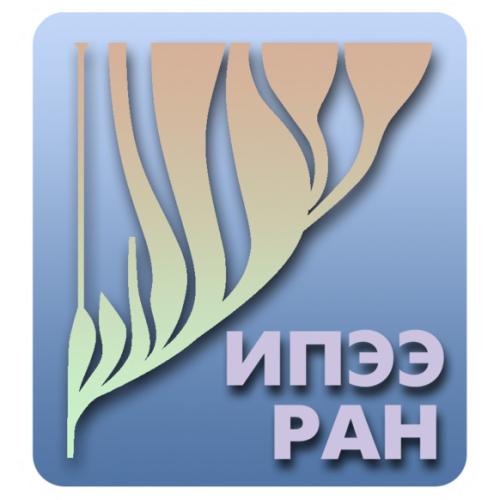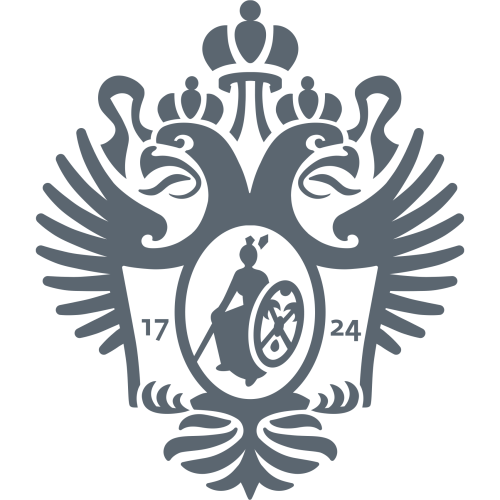Laboratory of Fungal Taxonomy and Geography
Publications
118
Citations
1 981
h-index
22
Authorization required.
The main activities of the laboratory are Systematics, phylogeny, evolution and ecology of fungi. Mycobiota of Russia and foreign countries. Structure, dynamics and ecology of fungal communities. The fundamental principles of mushroom protection. Preservation, replenishment and scientific processing of the collection funds of the Mycological Herbarium of the BIN RAS; promotion of mycological knowledge.
- Light microscopy
- Scanning electron microscopy (SEM)
- PCR
- Field research
- Creation of biological collections

Yuri Novozhilov
Head of Laboratory

Ivan Zmitrovich
Leading researcher

Mikhail Zhurbenko
Leading researcher

Oleg Shchepin
Senior Researcher

Olyga Morozova
Senior Researcher

Ekaterina Malysheva
Senior Researcher

Vera Malysheva
Senior Researcher

Vera Kotkova
Senior Researcher

Irina Kirtsideli
Senior Researcher

Evgenia Bogomolova
Senior Researcher
Sergey Volobuev
Senior Researcher

Eugene Popov
Senior Researcher
Lyudmila Kalinina
Researcher

Anna Fedosova
Junior researcher

Ilya Prikhodko
Junior researcher

Vadim Ilyyushin
Junior researcher

Vasily Dudka
Junior researcher

Sergey Bolshakov
Junior researcher
Fedor Bortnikov
Junior researcher

Anna Luptakova
Senior Assistant

Nadezhda Bortnikova
Senior Assistant

Daryya Ivanova
PhD student
Research directions
The ECOLAN program of the Joint Russian-Vietnamese Tropical Research and Technology Center and the scientific direction "Tropical Ecology. The current state, biological diversity and functioning of Vietnam's ecosystems". The theme of Ecolan E-1.5 is "Taxonomic and ecological diversity of mycobiota of tropical forests of Vietnam".
+
Objectives: To identify patterns of change in the taxonomic and ecological diversity of fungi, lichens and fungal protists in the forests of Vietnam. Identification of structural and functional features of macromycetes in the biodegradation of lignocellulose substrates. Tasks:1. Collection of samples of fungi, myxomycetes, lichens, substrates in the mountainous and lowland forests of Vietnam for metagenomic analysis, experiments with wet chambers and obtaining pure crops in national parks and reserves of Vietnam. 2. Identification of the taxonomic composition and ecological diversity of fungi and myxomycetes, as well as analysis of their changes taking into account altitude and latitude gradients. 3. Obtaining new data on the cultural and morphological features and biosynthetic properties of cultures of tropical species of basidiomycetes. 3. Study of the diversity of bolete and entoloma fungi in the forests of national parks and reserves of Vietnam.
Federal Scientific and Technical Program for the Development of genetic technologies for 2019-2027 No. 2021-1930-FP5-9/3 "HERBARIUM FUNDS OF BIOLOGICAL DIVERSITY OF PLANTS AND FUNGI OF THE COLLECTION FUND OF THE V.L. KOMAROV BOTANICAL INSTITUTE OF THE RUSSIAN ACADEMY OF SCIENCES: MODERNIZATION, DEVELOPMENT AND NETWORKING AS THE BASIS FOR FUNDAMENTAL RESEARCH AND IMPROVEMENT OF GENETIC TECHNOLOGIES"
+
Within the framework of this program, the laboratory is working on the following sections: Section 3. Development of a specialized library of DNA barcodes of the reference collection of myxomycetes. Section 6. Carrying out work on genetic barcoding of individual taxonomic groups of plants and fungi in Russia. Section 7. A study of the phylogeny and systematics of individual taxonomic groups of plants and fungi. Section 8. Creation of a conceptual model of the information system of herbarium specimens of the Herbarium of the BIN RAS. Section 9. Digitization of herbarium specimens of the BIN RAS Herbarium. Section 11. Improvement of storage conditions for plant and mushroom samples. Section 12. Replenishment of the collection funds of the Herbarium of the BIN RAS. Section 15. Creation of a DNA repository (purchase of equipment and trial filling).
Herbarium funds of biological diversity of plants and fungi of the Collection Fund of the V.L. Komarov Botanical Institute of the Russian Academy of Sciences: modernization, development and networking as the basis for fundamental research and improvement of genetic technologies
+
The purpose of the project: modernization and development of herbarium collections of plants and fungi of the V.L. Komarov Botanical Institute of the Russian Academy of Sciences to increase their demand and accessibility, as well as expand network interaction between the most important specialized institutions of Russia. Project objectives: 1. Expansion of network interaction between the V.L. Komarov Botanical Institute of the Russian Academy of Sciences and the most important specialized institutions of Russia in the use and development of bioresource collections. 2. Creation of new research opportunities and fundamental expansion of the functions of herbarium and related collections, including for genetic research. 3. Conducting scientific research, including in the field of development of genetic technologies. 4. Significant improvement of the information infrastructure of collections. 5. Development of the material base and infrastructure of collections and replenishment of their funds. 6. Dissemination of experience and best practices in working with collections, improvement of basic standards for working with them.
Herbarium funds of the BIN RAS (history, conservation, study and replenishment) Sub-topic: Mycological herbarium
+
About 3,500 samples of different collectors and different years of collection from the territory of both the Russian Federation and abroad have been inserted into the main fund of the Mycological Herbarium of the BIN RAS. Some taxa were not previously represented in the mycological herbarium. The electronic database contains information about 279 samples prepared for insertion. Work has been completed on updating folders for storing herbarium samples of anamorphic fungi and work has begun on updating folders for storing herbarium samples of rust fungi and myxomycetes. In total, about 600 folders have been updated. The storage conditions of the herbarium have been improved, disinsection has been carried out, work has been carried out to provide the herbarium with the necessary materials, fill the collection database, provide access to funds to representatives of third-party organizations, and exchange collectible material. The samples of a number of genera of aphyllophoroid fungi were sorted according to the geographical principle. Work continued on validation and cleaning of the electronic catalog of the mycological herbarium. During the audit of the stock collections, excicates of Mycotheca Metropolitana Fasc. VI (Nos. 101-120) were found in the amount of 20 samples, which were also moved to the main herbarium fund of the BIN RAS. Samples of collections of myxomycetes from Kamchatka, the Teberdinsky Reserve, and the Kaluga Zaseki Reserve have been prepared and laid out in the herbarium. More than 1400 nucleotide sequences have been obtained for light and dark spore myxomycetes from the collection of the Mycological Herbarium of the BIN RAS. The results of the study of the diversity of bolete fungi in three protected natural areas of the Central Highlands of Vietnam (Tainguen) have been summarized. An annotated list of 22 identified species has been compiled. Information on eight species has been published for the first time for Vietnam. The studied samples were inserted into the Mycological Herbarium of the BIN RAS, adding new species and genera to the diversity of taxa represented there, including the collection of type specimens. Data on the findings of 32 species of fungi new to the regional mycobiota of the Far East, including 8 species new to the mycobiota of Russia, have been published. The species of Volvariella clavocystidiata and Hyphodermella pallidostraminea, new to science, are described on the basis of collections placed in the Mycological Herbarium of the BIN RAS.
BIODIVERSITY, ECOLOGY AND STRUCTURAL AND FUNCTIONAL FEATURES OF FUNGI AND MUSHROOM-LIKE PROTISTS
+
BIODEGRADATION, BIOMINERALIZATION, FUNGI, FUNGAL PROTISTS, MORPHOLOGY, SYSTEMATICS, TAXONOMY, PHYLOGENY, PURE CULTURES, LIPIDS, EX SITU CONSERVATION, ENZYMATIC ACTIVITY, ECOLOGY The object of research is fungi and fungal protists at different stages of ontogenesis and lipids synthesized by them, oxidative enzymes and other compounds. The aim of the study is to study the taxonomic and ecological diversity, phylogeny, structural and functional organization and biosynthetic activity of fungi and fungal protists. For the first time, based on comparative morphology and molecular genetic data, a taxonomic revision of a number of groups of fungi and myxomycetes was carried out, in particular the order Cantharellales, the Gyromitra gigas species complex, the clade Rhombisporum (genus Entoloma), the subgenera Nolanea, Cyanula, Leptonia and Trichopilus (genus Entoloma), the genera Venturiocistella, Diderma, Perichaena. Based on morphological and molecular phylogenetic approaches, 29 new species of fungi and 3 sections of the genus have been described. New information has been obtained on the species diversity and ecological features of agaricoid, aphyllophoroid, heterobasidial, marsupial, lichenophilic fungi and myxomycetes of Russia, Vietnam and some other countries. The data obtained made it possible to justify the need to include several types of macromycetes in the Red Books of Russia, the Leningrad and Pskov regions, the Republic of Karelia and the Krasnoyarsk Territory. Practical recommendations for the application of mycological analysis in the restoration of monuments based on new approaches to assessing the degree of mycobiodestruction of materials are substantiated. The Eukaryotic supergroups: Taxonomy/Biotechnology interface platform has been developed and posted on the Internet, which contains information about the latest achievements in the field of building the eukaryotic macrosystem and the applied significance of supergroups. The cultural and morphological features and biosynthetic activity of a number of Agaricomycetes strains have been studied. As a result, 10 biotechnologically promising strains were identified. The conditions of cultivation of promising producers of mycelium biomass, oxidative enzymes and polysaccharides Poronidulus conchifer and Trametes versicolor have been optimized. The biodegradation potential of 17 strains of Steccherinum ochraceum was determined, the absence of correlation between enzymatic activity, the rate of biodegradation of wood and the geographical origin of these strains was shown, however, isolates isolated from samples from the same wood substrates had similar characteristics. The absence of a strict correlation between the activity of oxidative enzymes and the ability to destroy resistant azo- and triphenylmethane dyes in strains of the genus Phanerochaete was revealed. All strains can discolor dyes without the addition of mediators, however, the rate and degree of depigmentation are species- and/or strain-specific characteristics. The conditions affecting the transition from yeast to mycelial growth type in Phaeotremella foliacea and Rhodosporidiobolus colostri strains have been studied. As a result, it was found that ultraviolet radiation is an effective trigger for launching the mycelial growth program in Rh. colostri cells, whereas in P. foliacea cultures it leads only to a sharp decrease in the average cell size. Phosphorus deficiency in the nutrient medium causes a significant change in the lipid profile of Phaeotremella foliacea. As a result of studying the possible role of xylotrophic basidial fungi in biomineralization processes, a number of minerals were experimentally synthesized for the first time under the action of fungal metabolites. The data obtained indicate the possible participation of xylotrophic fungi in the transformation of natural substrates of various chemical nature, leading to the formation of secondary minerals, and can be used in biotechnology. To expand the collection of Cultures of basidiomycetes of the BIN RAS, as a result of field work in various regions of Russia and the Republic of Vietnam, over 190 new strains were isolated, 56 strains were verified with ITS1-5 sequences.8S-ITS2 rnDNA.
Publications and patents
Found
Nothing found, try to update filter.
2022
—
2023
| Новожилов Юрий Капитонович
Lab address
Санкт-Петербург, ул. профессора Попова, 2
Authorization required.








